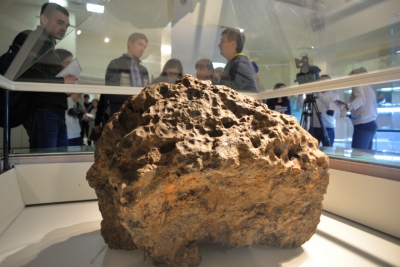
The Chelyabinsk meteor was a superbolide that entered Earth’s atmosphere over Russia on 15 February 2013 at about 09:20 YEKT (03:20 UTC). It was caused by an approximately 20 m (66 ft) near-Earth asteroid with a speed relative to Earth of 19.16 ± 0.15 kilometres per second (60,000–69,000 km/h or 40,000–42,900 mph). It quickly became a brilliant superbolide meteor over the southern Ural region. The light from the meteor was brighter than the Sun, visible up to 100 km (62 mi) away. It was observed over a wide area of the region and in neighbouring republics. Some eyewitnesses also felt intense heat from the fireball.
The object was undetected before its atmospheric entry, in part because its radiant (source direction) was close to the Sun. Its explosion created panic among local residents, and about 1,500 people were injured seriously enough to seek medical treatment. All of the injuries were due to indirect effects rather than the meteor itself, mainly from broken glass from windows that were blown in when the shock wave arrived, minutes after the superbolide’s flash. Some 7,200 buildings in six cities across the region were damaged by the explosion’s shock wave, and authorities scrambled to help repair the structures in sub-freezing temperatures.
Picture Credit : Google



